Token Takeaway: LYXe and LYX;
LUKSO is a blockchain platform that aims to revolutionise the fashion and lifestyle industry by providing Universal Profiles that allow users to create a single identity for anyone working in the creative field, giving them one platform to showcase their work and profile. This Token Takeaway delves into LUKSO’s potential impact on the fashion and lifestyle industry and analyses the value proposition of the platform’s tokens, LYXe and LYX.
Overview
LUKSO was founded in 2017, and according to its whitepaper, the platform identifies itself as a digital platform for creative professionals in the lifestyle, fashion, media, and design industries. It helps creators connect with their communities and automate transactions while enabling the management of assets and collections – like a Web3 version of Shopify. This blockchain solution is particularly tailored to the needs of the creative industries and provides a sustainable infrastructure for a number of innovative applications.
LUKSO is the brainchild of Fabian Vogelsteller, a German blockchain developer and entrepreneur who is best known for his contributions to ERC-721 Ethereum token standards. For those unaware, ERC-721 is a standard for creating non-fungible tokens (NFTs) on the Ethereum blockchain. A non-fungible token is a unique digital asset, i.e.not interchangeable with any other asset, unlike Bitcoin or Ether, which are fungible. This standard allows developers to create NFTs that represent ownership or proof of authenticity of a particular asset. For example, a piece of digital art can be turned into an NFT using ERC-721, and the ownership of that art can be tracked and verified on the Ethereum blockchain.
Since its inception, LUKSO has received significant attention from investors and industry players due to its unique focus on NFTs. LUKSO launched its original Testnet in 2020, while its Mainnet is expected to launch on 23 May 2023. To date, the platform has raised $18M in funding over two rounds, most recently on 18 February 2021. Investors such as Valeria Kholostenko and Google for Startups are among the most recent contributors to the project.
Potential Impact on the Fashion and Lifestyle Industry
The fashion and lifestyle industry is a massive and ever-growing market, ranging from clothing and accessories to beauty products and home decor. According to a report by Statista, the global fashion industry was valued at $1.53 trillion in 2022, and the market is expected to continue to grow, with projections of $2.25 trillion by 2025. However, the industry faces several challenges, including environmental concerns and supply chain transparency. The fashion industry is known for its significant carbon footprint, with estimates suggesting that it accounts for up to 10% of global greenhouse gas emissions. Additionally, the supply chain is complex, and it can be difficult for consumers to know where their products come from or how they were sourced.
Enter LUKSO. Leveraging blockchain technology, LUKSO aims to disrupt the industry by providing greater transparency, traceability, and accountability. The platform is designed to be user-friendly, scalable, and interoperable, making it a suitable solution for the fast-paced and rapidly evolving fashion industry. Its focus on sustainability is also noteworthy, as it aims to promote eco-friendly solutions in the fashion industry through blockchain technology.
With the Mainnet launch around the corner, LUKSO aims to be highly interoperable, allowing for seamless integration between blockchains. This fosters increased collaboration and innovation between different platforms, creating new opportunities for growth and development in the fashion and lifestyle industry, such as creating digital certificates for fashion items and virtual showrooms and marketplaces for brands to showcase their products.
What Is LUKSO’s Unique Selling Point?
Fabian Vogelsteller and his team created LUKSO as a blockchain platform specifically for the fashion and lifestyle industry. They saw an opportunity to use blockchain technology to help solve some of the challenges facing the industry, such as issues around supply chain transparency, counterfeiting, and provenance.
LUKSO is designed to be a platform for creating and managing digital assets in a secure and transparent way, such as fashion items, art pieces, and collectables. It enables brands and designers to create their own tokens, allowing them to manage authenticity, ownership, and value of their digital products. Additionally, LUKSO plans to offer a marketplace for these digital assets, where buyers and sellers can transact with each other in a secure and transparent manner.
LUKSO aims to be highly scalable, but it’s not a small feat. Achieving successful sharding with multiple shards is a complex issue that involves Zero-Knowledge Proof components, which are either not fully developed or not performant enough to be practical. Given these challenges, the Casper + 1 shard interim solution will be used as the optimal path forward, providing sufficient scalability and decentralisation to support the growth and evolution of the LUKSO Mainnet over the next few years.
Saying that, the developers at LUKSO want to ensure that the LUKSO architecture remains flexible enough to remain compatible with the development of ETH 2.0’s sharding. This will enable the LUKSO blockchain to be fully updated to a sharded blockchain when possible.
Tokenomics
The LUKSO’s public sale used a Reversible Initial Coin Offering (rICO), allowing participants to buy LYXe tokens at a specific price over eight months without committing to the entire sale process. Buyers could discontinue the sale and have their remaining ETH returned at any time and even join the sale later without being significantly disadvantaged.
The rICO was proposed by Vogelsteller and enabled the gradual unlocking of tokens through an autonomous-acting software instance deployed on the Ethereum blockchain. This approach meant that token sale was more equitable and protective for buyers.
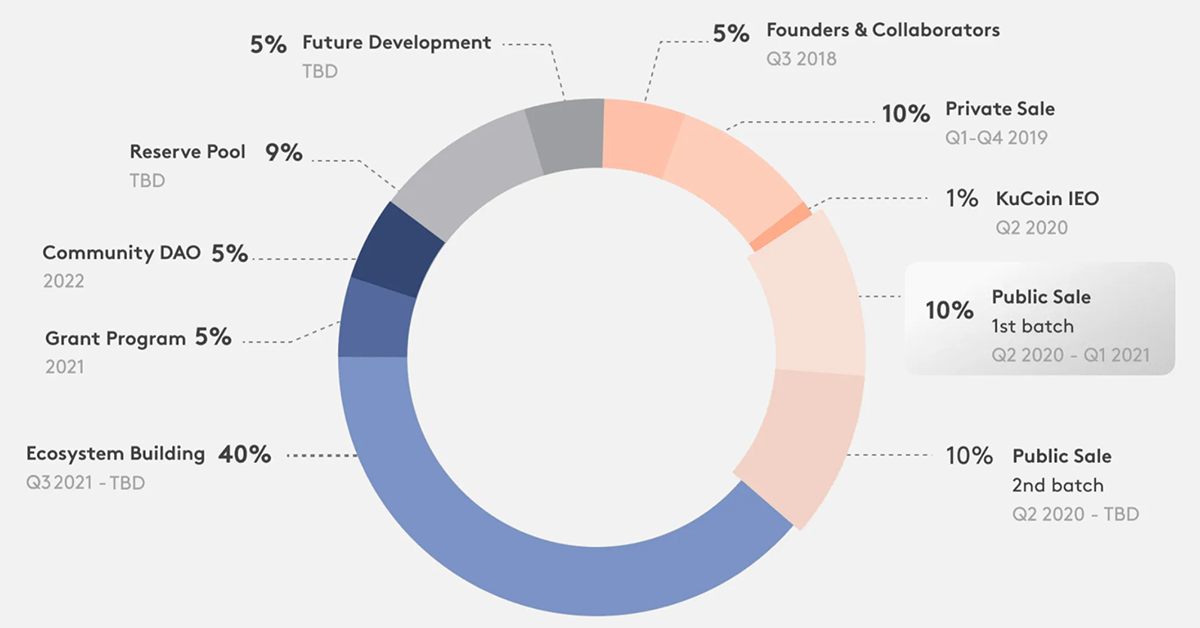
LYXe was initially released in 2020 with a circulation of about 15% of the 100 million in total supply. This amount comprises approximately 8% for sales and marketing fees, roughly 6% from the public sale, and 1% from the Initial Exchange Offering on KuCoin. However, it is worth noting that LYXe is the LYX token on the Ethereum blockchain. Once the main network goes live on 23 May 2023, token holders can trade LYXe for LYX.
LYXe Price Performance
As illustrated in the charts below, LYXe is currently scoring a 5-star ByteTrend (blue fill) in USD, BTC and ETH, showcasing a strong bullish trend against the three major assets.
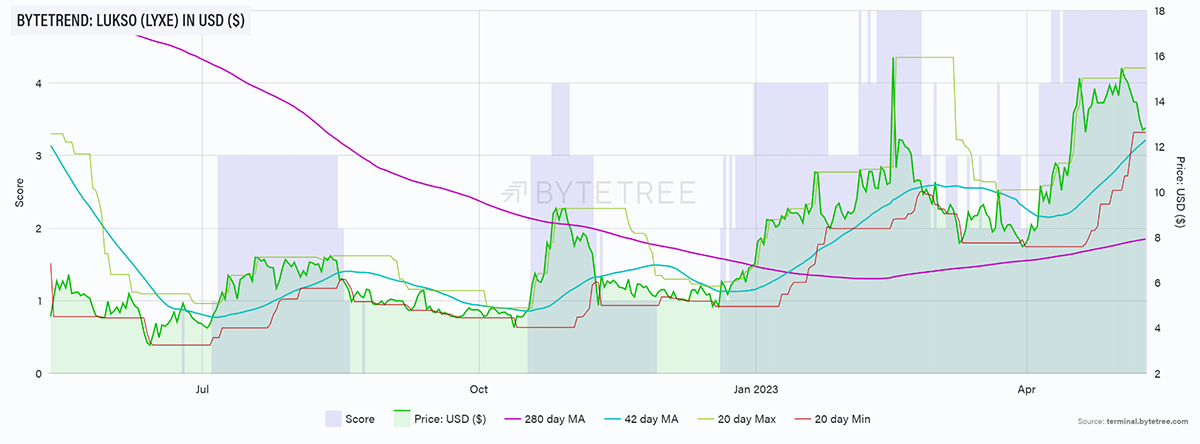
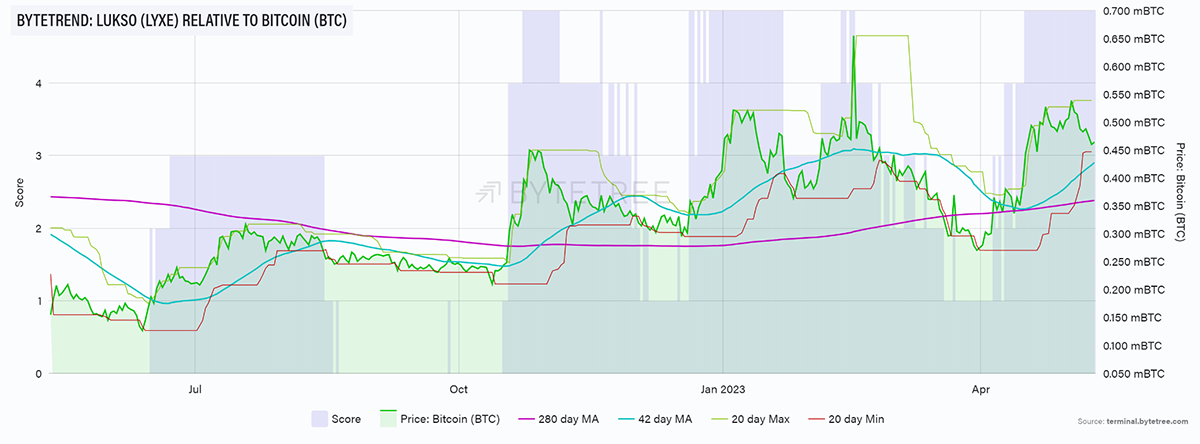
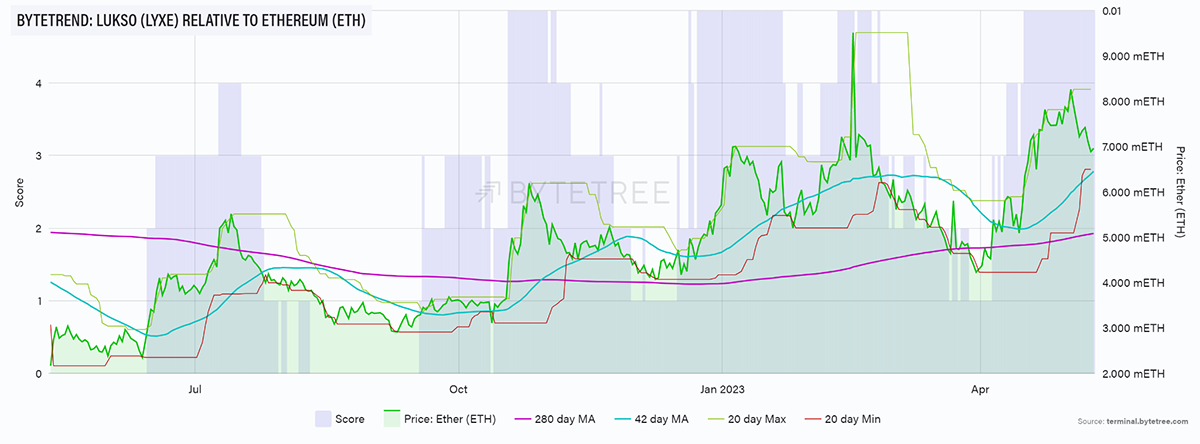
The LYXe token’s current strong price performance can be linked to the recent supply shock created by validator deposits when LUKSO’s Genesis Validator Launchpad went live on 20 April 2023. This was a necessary step ahead of the Mainnet launch.
According to LUKSO’s most recent post, a minimum of 4,096 Genesis Validators were required for the launch. Four days later, the network had secured more than double the required number, with 9,519 validators depositing a total of 304,608 LYXe, equating to over $4 million in value locked – a very promising start for the upcoming Mainnet launch.
LUKSO On-chain Data
The same can’t be said about the on-chain data. Based on the charts below, both the monthly active users and transactions for LYXe have been subpar.

Note the sudden peak in the transaction count towards the end of April 2023, which coincides with LUKSO’s Validator deposits.
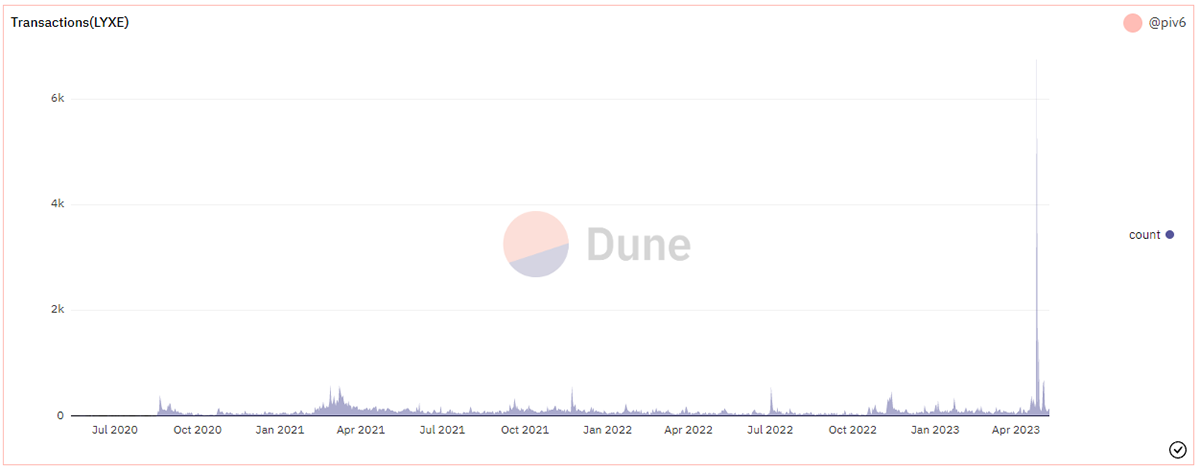
It’s worth noting that this data is for LYXe, which has limited utility, while the real utility will be prevalent once LUKSO’s Mainnet goes live. The reason is that LYXe can be traded for LYX, and LYX will be used to process transactions and secure the LUKSO blockchain.
The Competition
Some of the biggest names in the fashion industry, such as Nike, Adidas, and Prada, have partnered with Polygon to release their NFT collections. Since LUKSO is still in development and the Mainnet is yet to go live, the question is whether LUKSO will bring enough to the table to attract big brands to their platform. This will be the deciding factor in LUKSO’s success, as the partnerships it creates will attract more users to its ecosystem. The more users and liquidity available on the blockchain, the more incentive for developers to build on the ecosystem. Undeniably, LUKSO is entering a highly competitive market, going up against crypto giants like Polygon. No doubt that it’s going to be an uphill battle.
LUKSO is also not the only crypto-native blockchain that is looking to solve supply chain issues in the fashion and luxury industry, as VeChain specialises in solving supply chain issues across all industries. Unlike LUKSO, VeChain already has enterprise partnerships in many sectors, including automobile, FMCG, tech and logistics. Read our recent Token Takeaway on VeChain to learn more.
To date, there are no mentions of any key partnerships with the LUKSO blockchain. Given that the Mainnet launch is just around the corner, one would hope that there are some in the works.
Conclusion
LUKSO has a clear market niche but is up against market leaders like Polygon and VeChain. Since the LUKSO Mainnet has not even launched yet, it is difficult to assess the potential success of the platform or even identify its real-world utility. However, securing more than double the required validators at the Genesis Validator Launchpad stage is a promising start. We will follow future developments closely.







